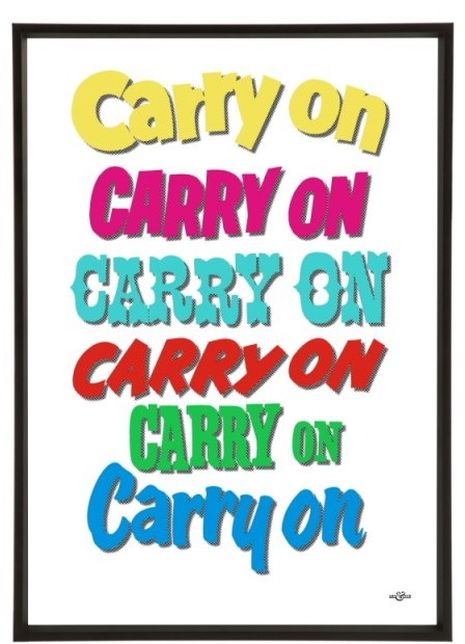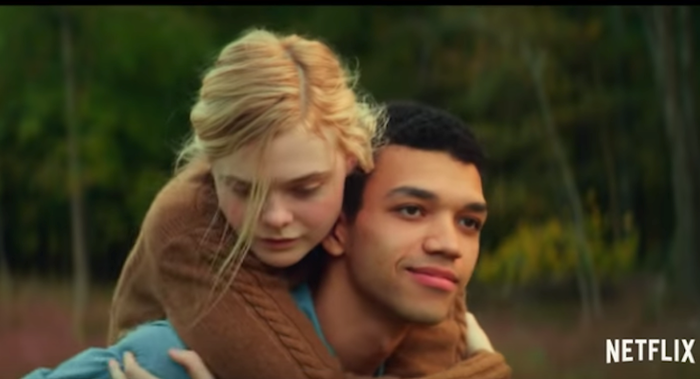Carry On (1958–1978) and the Power of Kitsch
Carry On, the legendary series popularised in the 1960s stills packs an enduringly campy punch, writes Alastair Smith.

While we were obsessively streaming Normal People and Tiger King, ITV was looking resolutely to the past and digging into its archives for material. Had you tuned into ITV2 for your lockdown entertainment, you would have been treated with some of the most memorable moments of British cinema – Barbara Windsor’s catapult-bra in Carry On Camping, Hattie Jacques’ matronly plod in Carry On Doctor, or Sid James’ bewilderingly raunchy portrayal of Mark Anthony in Carry On Cleo. Viewers of a certain age are sure to look back on such moments fondly - but what allure do these pictures still hold for audiences of today?
The Carry-On series, as successful as it was in its heyday, doesn’t quite gel with the image of the sixties which prevails in the 21st century. Their conservative sexual politics and nudge-and-a-wink innuendo seem out of place in a decade which, from a modern standpoint, appears to be full of revolution and upheaval. Much like the sitcom Friends, Carry-On has been cast into an embarrassing light by the progress of time and the evolution of sensibilities, leading to blunders which range from the mildly problematic (jokes playing on Kenneth William’s homosexuality, however good-natured, are bound to lose some of their lustre in light of his barbiturate overdose) to the painfully obtuse (a Bernard Breslaw wearing black face has never looked worse). But if the comparison with Friends proves anything, it is that audiences are not altogether deterred by the problematic elements of the media they consume – for all the discourse deconstructing its heteronormative outlook and all-white cast, David Crane and Martha Kaufmann’s sitcom has been the UK’s most streamed programme for three years on the trot.
To my mind, the Carry-On films have every bit as much potential to rouse and entertain as Friends. The patina of age has done nothing to dim the raucousness of their joyous sketches of British life, even if the world of the 1960s has gone something of the way of cockney rhyming slang. The series’ style is that of the high-camp, of the shamelessly lowbrow – to call them kitsch almost seems like an understatement. Their love of wordplay is infectious, and they are eminently quotable. And yet, it would be a disservice to relegate the Carry-On films to the realm of the guilty pleasure by virtue of this kitschiness. It may be an aesthetic approach that savours the tasteless and the cheap, but the value of objects described as kitsch should not be underestimated. After all, hidden beneath the boyish gags of Carry-On are some of the most powerful expressions of Britain’s early sexual revolution to be found within the mainstream. Carry On Camping, a highlight of the series, is memorable not only for pastoral tent-and-bucket hijinks, but also for a plot-line which uses raunchy antics as a vehicle for empowerment and liberation, even if its sexual politics are still coloured by patriarchal ideals.
If Carry-On is to be enjoyed in the 21st century, it is because of this kitsch appeal rather than in spite of it. At its core, kitsch is an aesthetic approach which revels in the garish and the grotesque. It acknowledges that a film does not have to carry great artistic or intellectual weight, or position itself at the vanguard of free love and flower power, to offer a valuable cinematic experience. The kitsch allows us to frequent media from the past, replete as it is with outdated values, and find the same things to enjoy as contemporary audiences. You do not have to leave your modern sensibilities at the door to relish the outrageous situation comedy of Carry On Abroad (something of a proto-Faulty Towers) or the merciless parody of the British Empire found in Carry On Up the Khyber. While it may be the films of Truffaut and Alfred Hitchcock that make it into the history books, the Carry-On series remains a testament to the sixties that got left behind, a cinematic world that reflects Britain as it was, rather than how we imagine it to have been.
It is a fact of life that the cinematic giants of the past will struggle to find place among the shiny new content of the present, a challenge exacerbated by the generational divide which has arisen thanks to the advent of streaming services. The perennial charm of Carry-On, however, is one that I think deserves our attention, one that allows us to revel in its campy fun even as we move away from the values of the past.
 News / Clare Hall spent over £500k opposing busway 24 December 2025
News / Clare Hall spent over £500k opposing busway 24 December 2025 Comment / The ‘class’ of Cambridge24 December 2025
Comment / The ‘class’ of Cambridge24 December 2025 News / Caius mourns its tree-mendous loss23 December 2025
News / Caius mourns its tree-mendous loss23 December 2025 News / Girton JCR publishes open letter expressing solidarity with Palestine25 December 2025
News / Girton JCR publishes open letter expressing solidarity with Palestine25 December 2025 Comment / Yes, I’m brown – but I have more important things to say22 December 2025
Comment / Yes, I’m brown – but I have more important things to say22 December 2025










